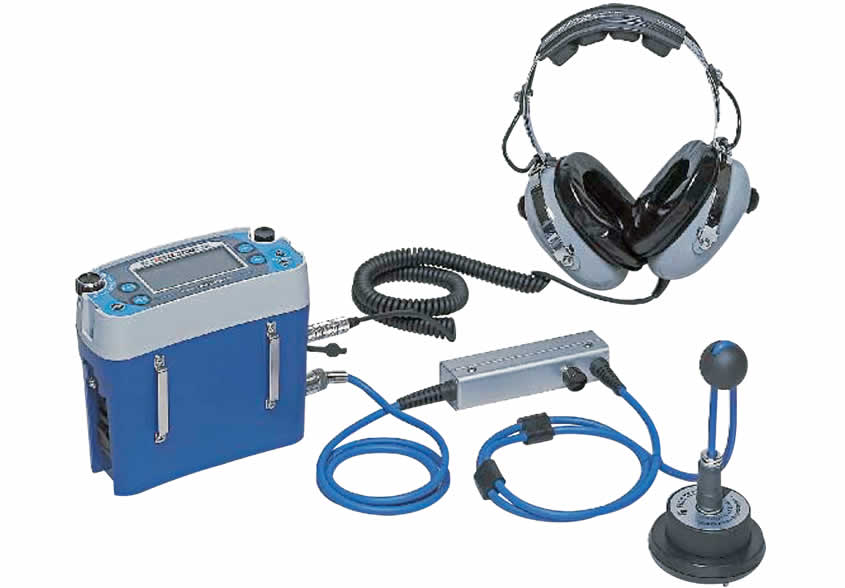Top Water Leak Detection Methods to Secure Your Residential Or Commercial Property from Water Damage
Top Water Leak Detection Methods to Secure Your Residential Or Commercial Property from Water Damage
Blog Article
Innovative Solutions for Early Detection of Water Leakages in Structures and Facilities
As the stability of structures and facilities is critical, the obstacle of very early detection of water leakages has spurred innovative options that promise to change the way we guard against prospective problems. From innovative leakage detection modern technologies to the deployment of IoT sensing units for real-time monitoring, the landscape of leakage prevention is developing swiftly. Device understanding algorithms use a glance into the future of leak forecast, while thermal imaging presents a non-intrusive technique for determining hidden leaks. Automated water circulation evaluation systems are reshaping exactly how leakages are identified and dealt with, leading the way for a positive technique to water leakage detection. Each of these options holds the vital to ensuring the reliability and durability of our constructed setting, prompting a shift towards a much more lasting and efficient future.
Advanced Leak Discovery Technologies
Advanced leakage detection technologies, geared up with innovative sensors and algorithms, play an important function in quickly identifying and determining water leakages in different settings. These technologies use a mix of acoustic, thermal, and electro-magnetic noticing techniques to discover leaks properly. Acoustic sensors find the noise of leaving water, enabling accurate localization of the leakage resource. Thermal imaging finds temperature level modifications brought on by water leakage, giving an additional efficient method for leakage identification. Electromagnetic sensing units can determine changes in magnetic fields created by water, using yet one more layer of leakage discovery ability.

IoT Sensors for Real-Time Surveillance
In the world of modern water leakage discovery, the combination of IoT sensing units for real-time tracking stands for an essential advancement in boosting positive leak discovery abilities. These sensing units supply continuous monitoring of water systems, supplying real-time information on water circulation prices, stress variants, and temperature changes. By leveraging IoT innovation, these sensors can identify even the smallest anomalies in water usage patterns, enabling early identification of potential leaks before they intensify into major problems.
IoT sensors transfer data to a centralized system, where innovative formulas examine the info and produce informs or alerts when abnormalities are detected. This real-time monitoring capability allows homeowner or center supervisors to immediately attend to leakages, lessening water damage, reducing repair service expenses, and saving water resources.
Furthermore, IoT sensing units can be incorporated with structure management systems, enabling computerized feedbacks to identified leakages, such as turning off water valves or turning on pumps to reduce the impact learn this here now of leakages. Generally, the application of IoT sensors for real-time monitoring significantly enhances the efficiency and performance of water leakage detection in structures and facilities.
Artificial Intelligence Algorithms for Leak Forecast

One trick benefit of making use of equipment discovering for leak forecast is its capability to constantly learn and boost its precision gradually. As more information is gathered and fed into the formula, it can refine its forecasts and adjust to transforming problems, inevitably boosting the dependability of leakage detection systems.
Moreover, device understanding formulas can assist in determining refined indicators of leaks that may go undetected by typical surveillance techniques. water leak detection. By evaluating complex data collections in real-time, these algorithms can offer early warnings and informs, permitting punctual intervention and precautionary maintenance to minimize prospective water damages and linked prices
Using Thermal Imaging for Leakage Discovery
Thermal imaging innovation offers an encouraging method for discovering water leaks in various systems and infrastructures. By using infrared radiation and temperature level variations, thermal imaging electronic cameras can recognize hidden leakages that are not quickly visible to the naked eye.
Among the essential advantages of thermal imaging for leakage discovery is its non-intrusive nature. Unlike typical techniques that might require getting into walls or floors to situate leaks, thermal imaging permits non-destructive testing. This not only saves time and decreases prices yet additionally lessens disruption to the building or infrastructure being analyzed. Furthermore, thermal imaging can quickly check huge locations, providing an extensive introduction of prospective leakage resources in a timely way. Generally, using thermal imaging innovation improves the performance and accuracy of water leak discovery, making it a useful tool for preserving the stability of structures and frameworks.
Automated Water Flow Evaluation Equipments
Just how can automated water flow evaluation systems revolutionize the discovery and administration of leakages in various systems and infrastructures? Automated water flow evaluation systems provide an aggressive method to leak discovery by continuously keeping track of water flow rates and patterns. By establishing standard information, these systems can promptly determine deviations that may show a leak, allowing prompt intervention to prevent substantial damages.
These this contact form systems make use of advanced formulas to analyze real-time information and give instant notifies when abnormalities are identified, enabling speedy activity to be taken. Additionally, automated water flow analysis systems can be integrated with structure management systems or IoT platforms, enhancing general performance and enabling remote monitoring capacities.
Furthermore, the data accumulated by these systems can be utilized for anticipating maintenance purposes, aiding to determine prospective weak factors in the infrastructure prior to leaks happen. In general, the application of computerized water flow evaluation systems can significantly enhance leak discovery and administration practices, inevitably leading to set you back financial savings, minimized water waste, and boosted sustainability in structures and facilities.

Conclusion
Finally, the assimilation of sophisticated leakage detection technologies, IoT sensing units, machine learning formulas, thermal imaging, and computerized water flow evaluation systems provides ingenious options for early discovery of water leakages in buildings and facilities. These technologies make it possible for real-time monitoring, prediction of leakages, and efficient discovery techniques to avoid water damage and wastefulness. Carrying out these options website link can aid in maintaining the integrity and sustainability of water supply in different setups.
Report this page